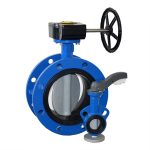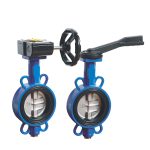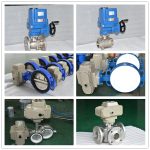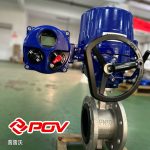I. Introduction
Ball valves are the most commonly used valves to control the flow of fluid or gas in a pipeline. A properly installed and maintained ball valve can ensure that your system runs safely and efficiently, saving you time and money in the long run. However, when it comes to replacing a ball valve, many individuals may feel overwhelmed by the task. This guide will walk you through the process of replacing a ball valve and provide you with helpful tips to ensure that your project is successful. How to replace a ball valve?
At POV Valves, we have over 20 years of experience in valve manufacturing and are committed to delivering reliable solutions for our customers. Our valves are designed with the latest technology and materials to ensure they will work as expected even in the most demanding environments. We also offer a variety of customization options so that you can tailor your valve solution to meet the needs of your specific application.
II. Understanding the Function and Importance of a Ball Valve
A ball valve is a type of quarter-turn valve used to control the flow of fluid or gas in a pipeline. It uses a rotary motion to turn the valve on and off, which makes it easier to operate than other types of valves. The ball inside the valve has a hole cut through its center, allowing for unrestricted flow when open and complete blockage when closed. This makes the ball valve a great choice for applications that require frequent on/off operation because it is very easy to operate and reliable in its performance.
Replacing a faulty or worn-out ball valve is critical for maintaining the integrity of your system. If a ball valve fails, it can cause a great deal of damage to both the system and the surrounding environment. By replacing the old valve with a new one, you can ensure that your system is safe and efficient. Additionally, replacing an old valve with a new one can help you save money in the long run by prolonging the life of your system and avoiding costly repairs or replacements.

III. Preparing for the Replacement Process: How to replace a ball valve?
Before you start the replacement process, it is important to properly prepare. You will need to gather all of the necessary tools and supplies beforehand to ensure that you have everything you need for a successful project. Make sure that you have an appropriate size wrench or screwdriver, as well as a new ball valve with the right connection type and dimension. You may also want to have a few extra parts on hand in case something is missing or needs to be replaced.
Once you have all of the necessary supplies, make sure that you take the time to read through your owner’s manual and understand any special instructions for operating or replacing the valve. Additionally, it is important to turn off the main water supply and drain out any remaining liquid before beginning the replacement process. This will help reduce any chances of water damage or injury during installation.
A. Safety Measures and Equipment
Detailed guidelines on ensuring personal safety and protecting the surrounding area during the replacement.
B. Tools Needed for the Job
List of tools needed for a successful valve replacement, such as wrenches, screwdrivers, and hex keys.
C. Identifying the Right Valve Type
Tips on selecting the appropriate type of ball valve to meet your needs.
IV. Removing the Old Ball Valve: How to replace a ball valve?
Once you have all of the necessary supplies and safety measures in place, it’s time to begin removing the old ball valve. The exact process for removal may vary depending on your application, but generally follows this sequence:
-
- Turn off the main water supply and drain out any remaining liquid.
- Loosen the nuts or bolts connecting the valve to the pipeline.
- Remove the old valve from its position in the pipeline.
- Clean any debris or buildup that may have accumulated over time.
A. Inspecting the Existing Valve
Guidelines on inspecting the existing valve to ensure it is in proper working condition.
B. Preparing for Disconnection
Tips for safely disconnecting the old ball valve from the system.
C. Removing and Discarding the Old Valve
Instructions on properly removing and discarding of the old valve, as well as disposing of any hazardous materials.
V. Selecting and Installing the Replacement Ball Valve
Once you have removed the old ball valve, it’s time to select and install the replacement. You should make sure that the new valve is of the same size and type as the original, as well as compatible with your system’s connection type. Additionally, you will want to double-check that all of the necessary components are included in your package and that the valve is functioning properly before installation.
Once you have confirmed that everything is in good condition, it’s time to install the new valve. The installation process generally follows this sequence:
-
- Connect the valve to the pipeline using connectors appropriate for your system.
- Apply thread sealant or Teflon tape around the threads of the connectors to ensure a tight seal.
- Tighten the nuts or bolts connecting the valve to the pipeline.
A. Choosing the Right Valve
Providing insights into the factors to consider when selecting a replacement ball valve, such as material compatibility and pressure ratings.
B. Connecting the New Valve to the System

Detailed steps for connecting and securing the new valve in place.
C. Testing the New Valve
Guidelines on properly testing and adjusting the newly installed ball valve to ensure it functions as expected.
VI. Regular Maintenance and Upkeep
With proper maintenance and upkeep, your ball valve can ensure reliable performance for years to come. Some tips for keeping your valve in good condition include:
- Regularly inspect the valve and its components for signs of wear or damage.
- Make sure any adjustments are performed by a qualified technician.
- Clean away any debris or residue from the valve after each use.
- Replace any worn or damaged parts as soon as possible to prevent further damage.
By following these tips, you can help ensure that your ball valve is reliable and performs at its best for many years to come. Additionally, be sure to keep an eye on any changes in the local regulations regarding ball valves; this will help you stay compliant with any new requirements.
VII. Conclusion
Replacing a ball valve is not a difficult process if you have the right tools and know-how. The key steps involved include: gathering the necessary supplies, preparing for the project, removing the old valve, selecting and installing the replacement, and performing regular maintenance. If you follow these steps, you can ensure that your valve is safe and efficient for many years to come.
By taking the time to properly replace and maintain your ball valve, you can save money in the long run by avoiding costly repairs or replacements. Additionally, adhering to any local regulations can help ensure that your system remains compliant with all safety standards. Ultimately, understanding the basics of ball valve replacement can help reduce any downtime and ensure that your system runs smoothly.
At POV VALVES, we are dedicated to providing reliable, cost-effective valve solutions for our customers. With a global reach and decades of experience in the industry, you can trust us to deliver the best products and services for your needs. Whether you need replacement parts or a completely new system, we have the expertise and resources to help ensure success. Contact us today to learn more about our products and services.











